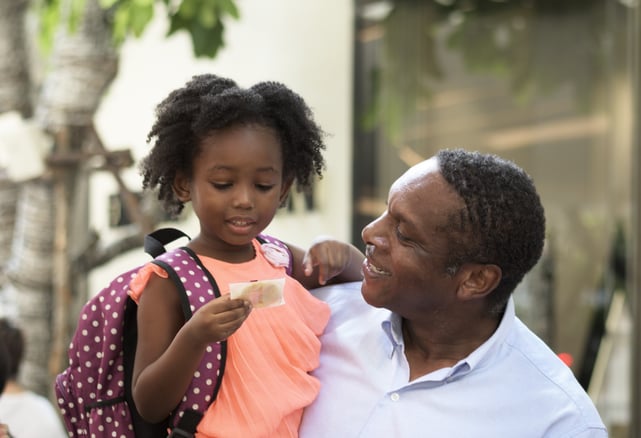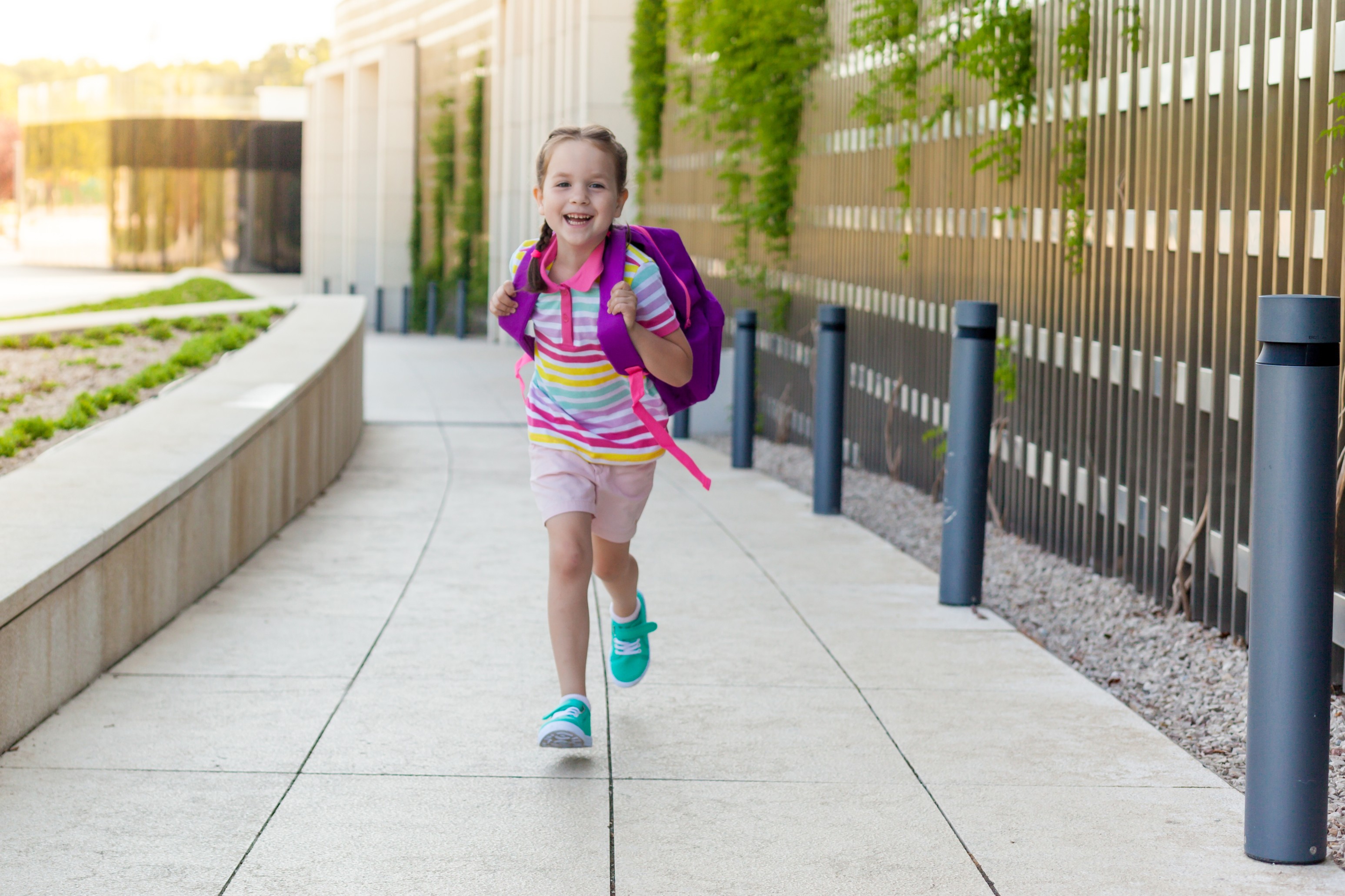New School Year = New Backpack
Published on:
Published in:
Physical Therapy, Back-To-School
What you need to know before you go back-to-school shopping!
Once summer comes to an end, all the major department stores begin to stock their shelves with school supplies. We all know the drill: new backpack, folders, notebook paper, pencils, crayons, etc.
When you begin the search for a perfect backpack, my guess is your child typically picks out the one with their favorite character, the one with the prettiest colors, or the one that looks the “coolest.” Surprisingly, there is a lot more that should go into picking out the right backpack for your child.
More and more school-aged children are reporting neck, shoulder, back and knee pain that could be related to carrying heavy backpacks on a daily basis. Research has shown that many factors of backpack wear contribute to the negative effects seen.
Some of these factors include, but are not limited to: the amount of time wearing the backpack, the overall weight of the backpack, the distribution of weight inside the backpack, the distance the child walks while wearing the backpack, the placement of items inside the backpack, and the incorrect wear of a backpack (Campus Life 101: Backpack Safety, 2020). There is often a negative impact on posture when a backpack is too heavy or is carried improperly, thus leading to pain and possible long- term effects to health and wellness. Studies show there is an immediate change in neck curvature when a backpack is worn, which increases in severity the heavier the backpack is (Parekh, Vaghela, Padsala and Patel, 2019). Besides pain, another common symptom associated with inappropriate backpack wear is numbness or tingling in the arms or legs. There have also been links to backpack carriage and negative effects on walking patterns such as a slower cadence and increased pressure at various points under the feet (Ahmad and Barbosa, 2019).
Despite these negative effects, there are a few simple ways to combat this problem and improve overall backpack safety.
Pick out a backpack with the right features, including:
» Two padded straps
» A padded back
» Hip and/or chest belt(s)
» Size should not be wider or longer than the stomach of the child carrying it
» Multiple compartments
Do not over stuff the backpack:
» A backpack should weigh no more than 10% of the child’s body weight.
» For example: If your child weighs 50 pounds, then their backpack should weigh more than 5 pounds.
» In a study conducted on school aged children, just a five percent increase in weight carried in their backpack (15% of body weight) led to increased musculoskeletal injury risk, pain, swelling, fatigue, and redness. (Perrone et al., 2018)
» If heavier items need to be put into the backpack (i.e. textbooks, laptop, etc.), then pack the heaviest items toward the back and the lighter items in the front in order to allow for better weight distribution.

Discuss the proper ways to carry a backpack with your Child
» Tighten the straps to where the bottom of the backpack hits at the child’s waistline
» Always wear two straps when carrying the backpack
» Clip the hip and/or chest belt(s) to provide more support
» Wearing a hip strap while walking with a backpack has been shown to decrease overall energy expenditure and perceived exertion (Pigman, Sullivan, Leigh and Hosick, 2017).
» Stand upright without leaning forward or backward
Some other tips for parents include (Backpack Safety - Preventing Injury - OrthoInfo -AAOS, 2020):
» Encourage your child to talk to you about any pain or numbness/tingling that occurs during or after backpack wear.
» Do not ignore any neck or back pain.
» Watch your child pick up, put on, and/or take off their backpack in order to ensure proper technique is utilized.
» Discuss other safety precautions with your child such as, putting their backpack away when they arrive at home, holding it in their lap or putting it under the seat on the school bus, or keeping it in a locker or under their desk while at school as to not provide a tripping hazard to fellow students or family members.
» If your child’s school provides lockers, then discuss the importance of dropping off and picking up only the books they will need in their next class to decrease the load in their backpack.
» Observe your child’s posture before, during, and after backpack wear.
» If there is a prior history of back or neck problems, then consider a rolling backpack. These are not appropriate for all students due to increased risk of tripping hazards in the school environment by cluttering hallways and walking paths, but may be a good option to prevent further injury if a predisposing diagnosis exists.

Heading back to school is an exciting time for teachers, parents, and students. Starting off with the appropriate equipment is the first step to decreasing injury risk. The next and most important step is proper education to your children regarding backpack wear and safety. By completing these simple steps when shopping for a new backpack and planning for a new school year, your child’s risk of injury due to improper backpack wear will be significantly diminished.
If you do begin to notice your child exhibiting poor posture while carrying their backpack or you hear reports of pain or discomfort in your child’s back, neck, hips, or knees after carrying their backpack, then it may be time to seek an evaluation by a trusted physical therapist to determine if an injury has occurred. At Carolina Pediatric Therapy we have a team of physical therapists who are prepared to walk beside you on your journey. They will be able to provide further tips and advice on backpack wear, assess aching joints or other painful areas, and provide interventions to decrease pain, improve posture, and enhance overall function.
References:
Leilani Maybin, PT, DPT is a Licensed Physical Therapist with Carolina Pediatric Therapy. She is a part of an interprofessional collaborative team including behavioral health, occupational therapists, physical therapists, speech-language pathologists, and Psychologists dedicated to supporting and promoting children’s development and well being.
- Boston University. 2020. Campus Life 101: Backpack Safety. [online] Available at: <http://www.bu.edu/articles/2019/backpack-safety-101/> [Accessed 13 May 2020].
- Parekh, S., Vaghela, N., Padsala, D. and Patel, D., 2019. Effect of backpack loading on cervical and sagittal shoulder posture in standing and after dynamic activity in school going children. Journal of Family Medicine and Primary Care, 8(3), p.1076.
- Ahmad, H. and Barbosa, T., 2019. The effects of backpack carriage on gait kinematics and kinetics of schoolchildren. Scientific Reports, 9(1).
- Perrone, M., Orr, R., Hing, W., Milne, N. and Pope, R., 2018. The Impact of Backpack Loads on School Children: A Critical Narrative Review. International Journal of Environmental Research and Public Health, 15(11), p.2529.
- Pigman, J., Sullivan, W., Leigh, S. and Hosick, P., 2017. The Effect of a Backpack Hip Strap on Energy Expenditure While Walking. Human Factors: The Journal of the Human Factors and Ergonomics Society, 59(8), pp.1214-1221.
- Orthoinfo.aaos.org. 2020. Backpack Safety - Preventing Injury - Orthoinfo - AAOS. [online] Available at: <https://orthoinfo.aaos.org/en/staying-healthy/backpack-safety/> [Accessed 13 May 2020].
Want to know how a Therapist can Help?
Schedule your infant, child, and teen for an evaluation today and see how a therapist can help your family.
Call (828) 398 0043 or click on the schedule button.
Call (828) 398 0043 or click on the schedule button.
Physical TherapyBack-To-School
Share On



